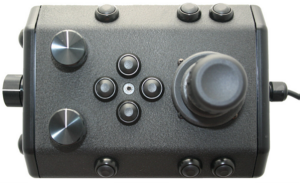Piloting in Swift Current
Working in current presents challenges that you may not be able to overcome if the current is too strong, but there are several strategies that you can apply depending upon the situation. Current can be consistent throughout depth, or there may be wind driven current on the surface, and tidal or other currents below. This will of course complicate the situation, but there are techniques to try before giving up.
- Use the minimum amount of tether possible and use performance or negative tether to minimize the effects of drag.
- If you are working deep or along the bottom, add a weight to the tether several meters behind the ROV. Make sure to distribute the stress of the weight connection along a section of tether rather than tying the weight to one point.
- To turn around while facing downstream, you must get the tension off of the tether. If you do not, then attempts to turn around to go upstream will probably result in overturning and facing back downstream again. To turn around, first apply reverse thrust to relieve the tension, and then turn.
- If you can position yourself upstream, you can try to weather vane the ROV and let it float downstream while you move side to side if necessary. By moving your tether deployment location, you may be able to cover the areas needed.
|








